In this week’s edition of Floral Friday, I explore an incredibly beautiful but shy and elusive flower from the foothills of the Sierra Nevada.
It’s not news that California has an exceptionally rich array of flora, including some exceptionally rare and unique plant species. If you’ve read some of my other posts, I enjoy highlighting such native botanical gems, and today’s blog post is no different. If you continue to read, or just look at the pretty pictures, you’re going to be ingesting the Collomia rawsoniana, also known as the Flaming Trumpet.

September 1st started out very early, like many other weekend days with our eyes on some hopefully botanical prizes. We camped the night before in our favorite spot at Ackerson Meadow, this time with some curious cows adorned with bells. Trevor drove all the way to Fish Camp to the Tesla Charger while I slowly got more car sick, yuck.
I took the reins after making breakfast in the trunk area towards Bass Lake/The Pines. Our route took us switchbacking up, up and up into the Sierra foothills until we reached the designated pre-sought-out spot. Trevor took to the riparian area quickly, a small creek ran through and underneath a bridge we parked next to. It didn’t take long before he found the Flaming Trumpet! Huzzah! A little bit more scrounging around led us to more individual plants. After our photographing and admiring were complete we headed back to the car for a day of gallivanting in subalpine meadows in search of more botanical rarities.
Where did the name come from?
The name Collomia rawsoniana commemorates the collector of its type material, Lucy Adeline Briggs Cole Rawson Peckinpah Smallman, yes that’s her full name. Lucy was an American watercolor botanical artist and botanical collector. She was born Luccy Adeline Briggs in 1840 but gathered all her additional names through her multiple husbands until her death in 1920.
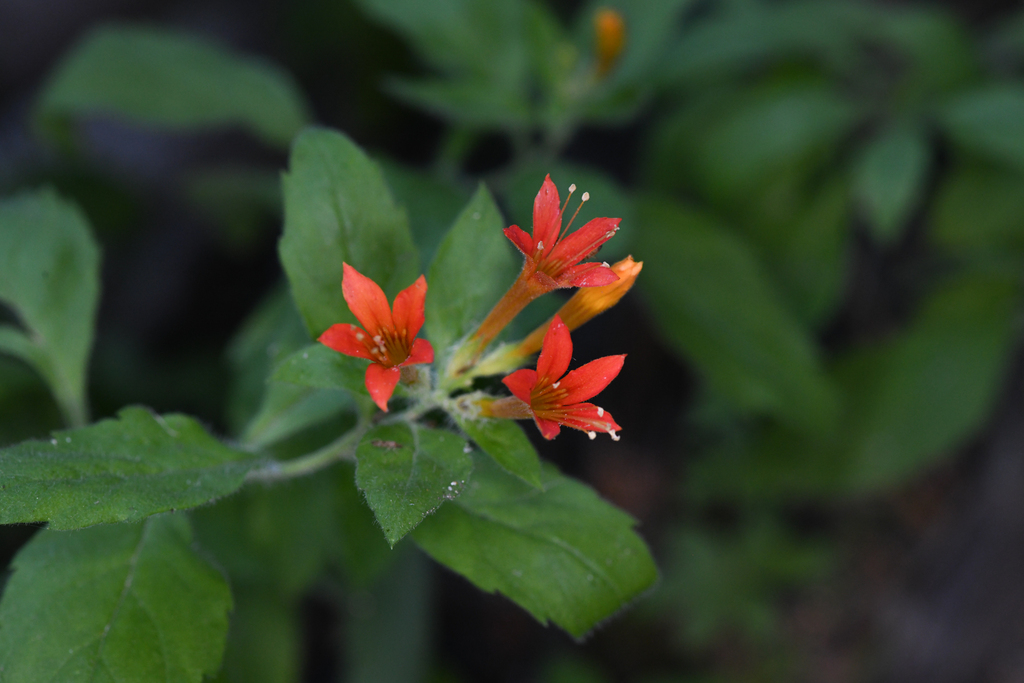
A Rare Endemic
Collomia rawsoniana is a California endemic, specifically limited to just two counties: Mariposa and Madera. Therefore it gets a California Rare Plant Rank 1B.2, signifying its status as a rare, threatened, or endangered species not only in California but elsewhere as well. To get a sense of its rarity, on iNaturalist it’s only been observed 23 times by 14 observers, this is pretty low. On Calflora, another citizen science platform, but for botanists. CalFlora has 146 observations, dating back to 1888 when it was originally described.
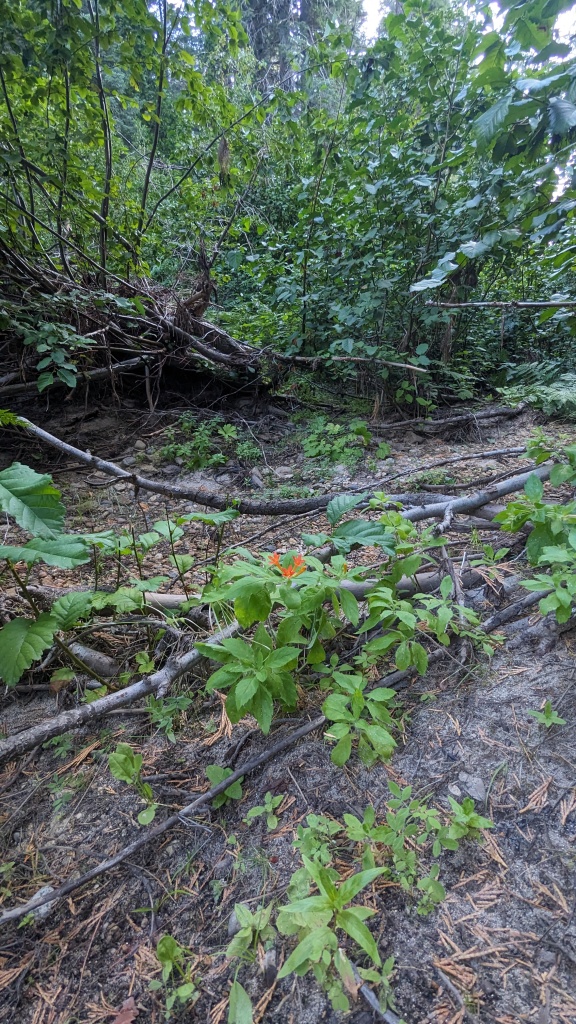

Habitat & Communities
The Flaming Trumpet loves riparian habitats, favoring shaded areas near streams in woodland environments. Specifically, it thrives in the Yellow Pine Forest communities of the Sierra Nevada foothills, where it graces the understory with its bold presence.
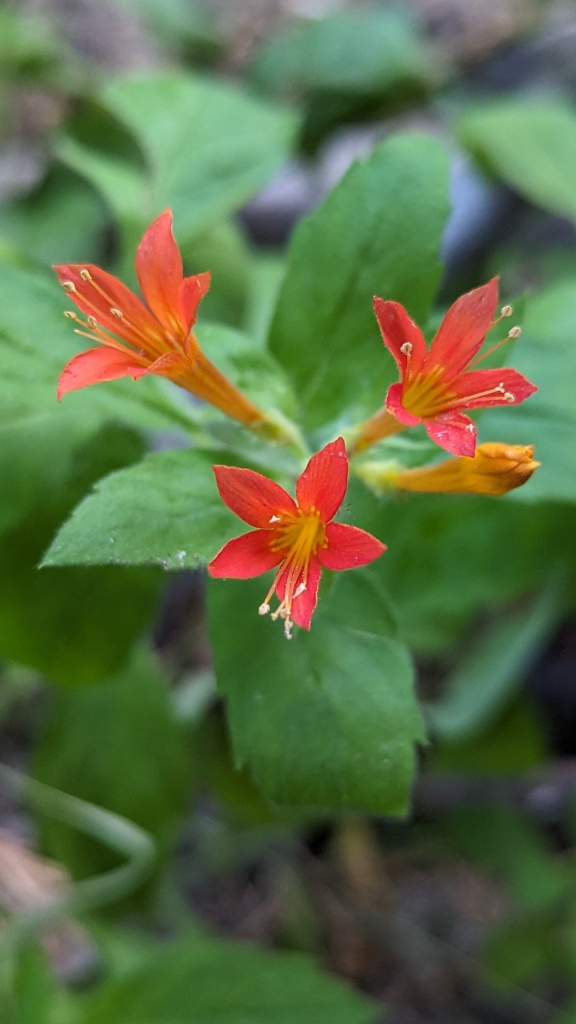



Flaming Trumpet’s Allure
Oooooo boy, Collomia rawsoniana is truly a botanical spectacle. It grows as a perennial herb, emerging from slender rhizomes that anchor it firmly to the ground. The plant’s slender stem can reach heights exceeding half a meter! Its leaves, generally 3 to 8 centimeters in length, take on an ovate to elliptic shape and are coarsely toothed and glandular-hairy. They were lovely to feel between my finger tips.
But the reason we are all here is the plant’s striking inflorescence, its pièce de résistance! The Flaming Trumpet earned its common name for this reason obviously – its inflorescence boasts three to seven vibrant red-orange flowers, each with a trumpet-shaped corolla measuring up to 4 centimeters in length. Bonus points are also added due to the protruding pistil and stamens, always a fun characteristic.


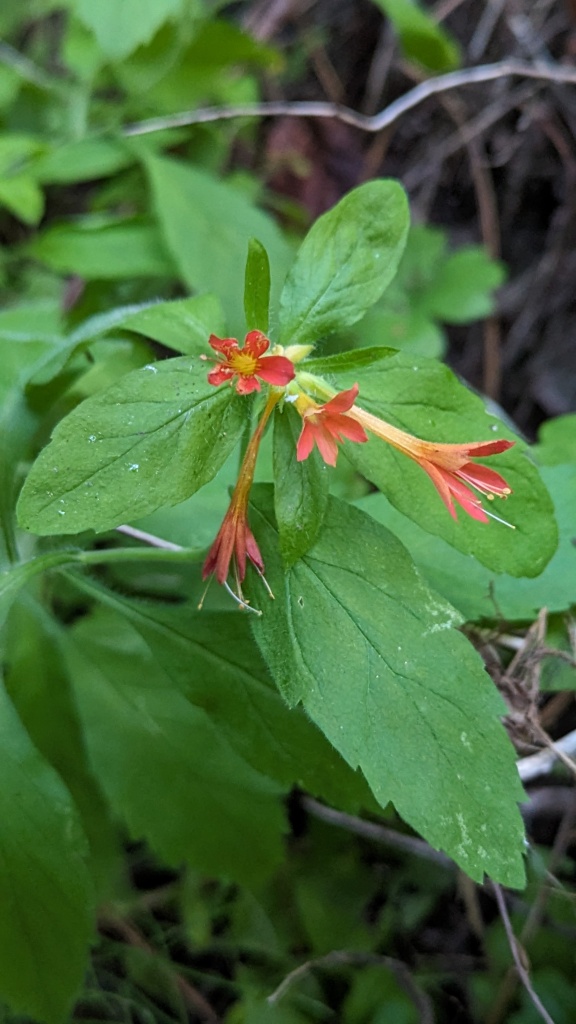
Insect associates?
The only mention of pollinators I found is that it’s suspected to provide sustenance for the White-lined Sphinx (Hyles lineata), a diurnal moth, and one that’s had a population boom this year in California, most likely due to the abundant rains we had this winter.
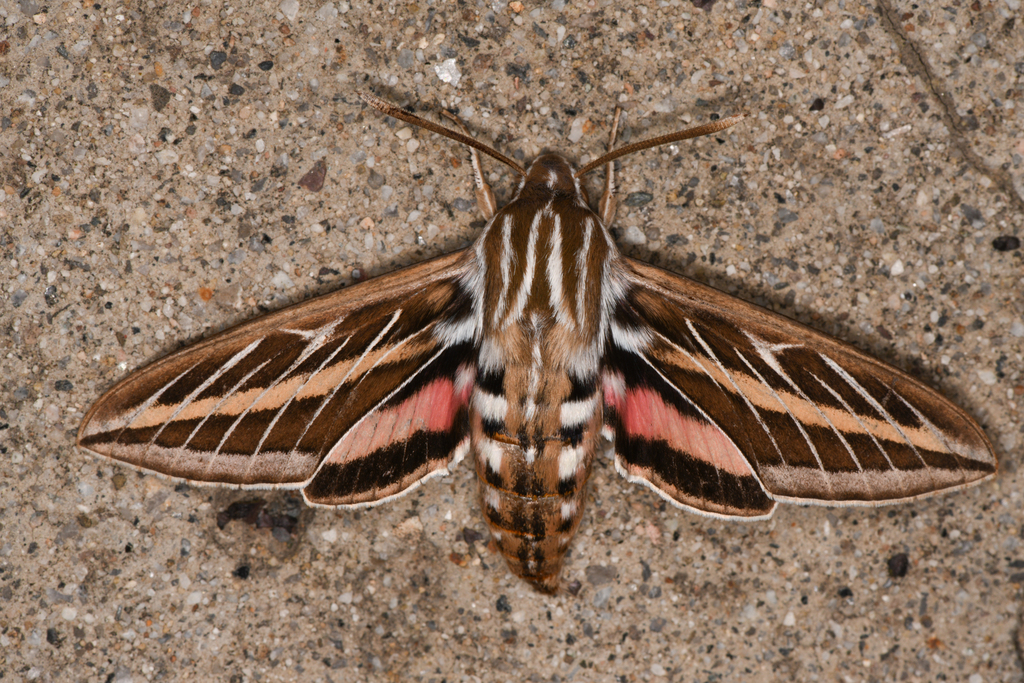
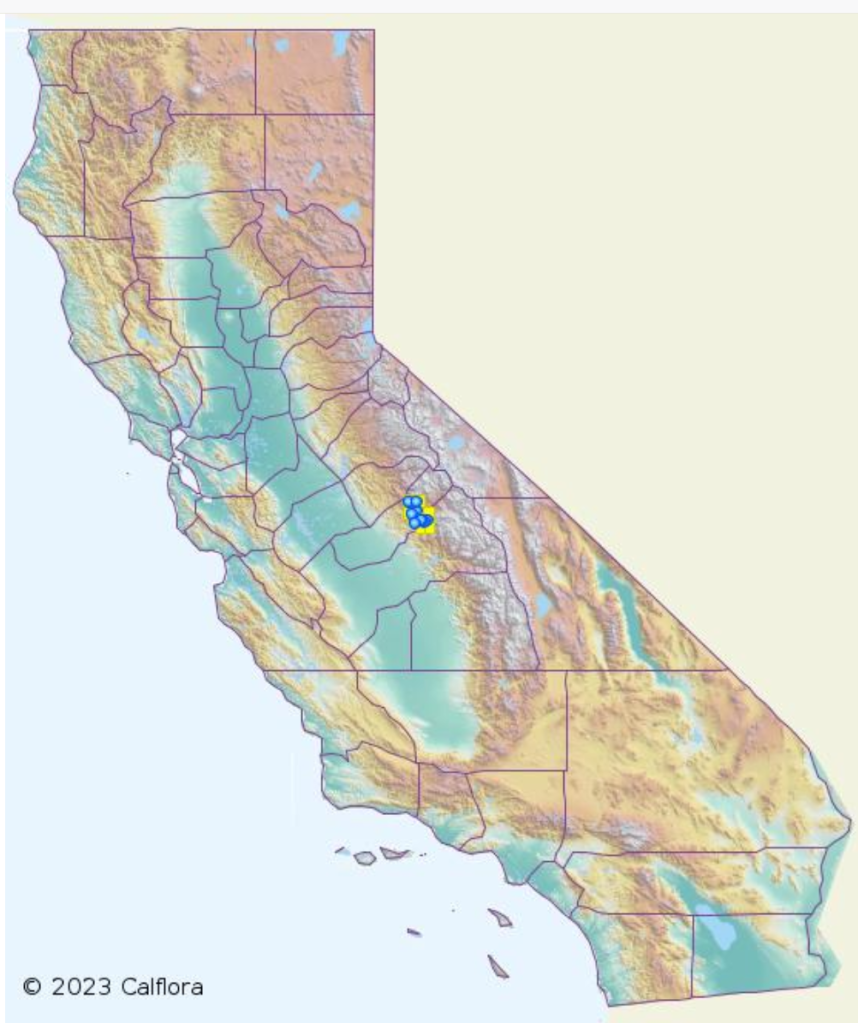
Geographic Range and Flowering Time
This plant is only found at elevations ranging from 1000 to 2200 meters and as mentioned only located in Mariposa and Madera counties, which are in the central Sierra Nevada area. You’ll have to visit these areas during between June to September to catch the va va vooom bloom.
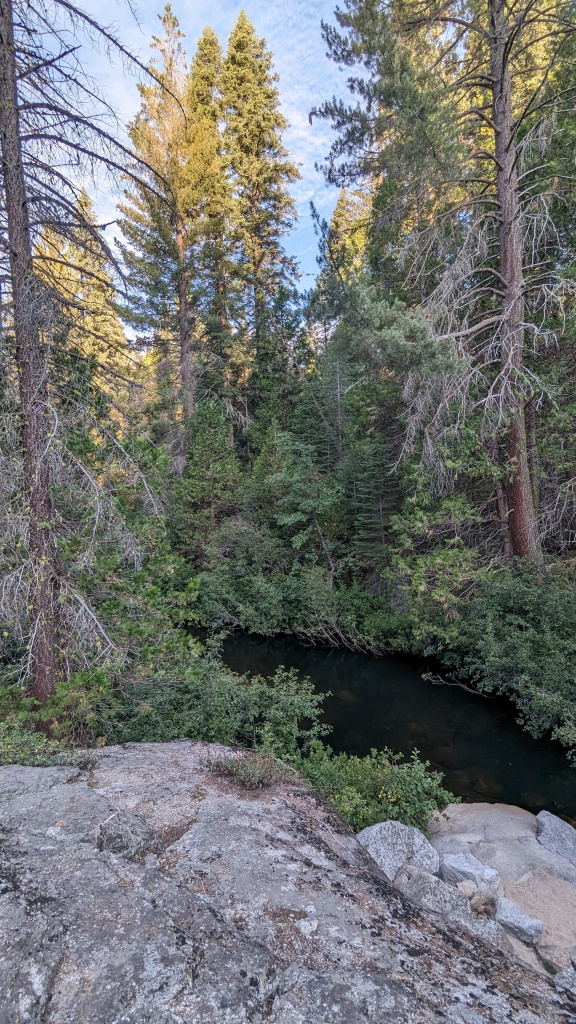
I hope this blog post provided a tidbit of interest and curiosity into this and other rare plants.
Happy Botanizing!
Sources:
- Calflora, Collomia rawsoniana:https://www.calflora.org/app/taxon?crn=2304
- CalScape, Collomia rawsoniana: https://calscape.org/Collomia-rawsoniana-()
- Wikipedia, Collomia rawsoniana, https://en.wikipedia.org/wiki/Collomia_rawsoniana
- Jepson Herbarium, Collomia rawsoniana, https://ucjeps.berkeley.edu/eflora/eflora_display.php?tid=20026
The flaming Trumpet flower color is stunning! The moth (pollinator) is an example of nature’s beautiful designs. Your blogs are a joy to read. :))))))
LikeLike
Thank youuuuu so much! I totally agree about the moth, one of my favorites!
LikeLike
Hi Sweetie, I loved your trumpet flower blog. I have a geranium with this same color. I left a comment and sometimes I am never sure you got it. I hope the car sickness did not last too long. Love Mom
>
LikeLike
Undoubtedly pollinated by hummingbirds. Red corolla, long corolla tube. That is typical flower morphology for hummingbird pollination. I was thrilled to see this species in full bloom this year as well, high up on Whiskey Falls Road – Ryan O’Dell
LikeLike
Thanks Ryan! We were very thrilled too!
LikeLike